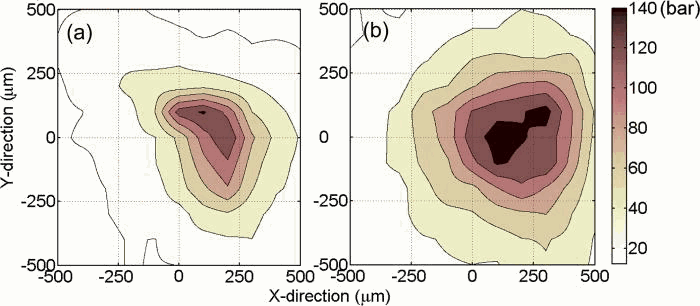Researchers at Nanyang Technological University have been responsible for a lot of major advancements happening in 3D printing, particularly this year. Their research has included plans for 3D printed public housing, the development of new materials for 3D printed medical implants, and the creation of 3D printed dental scaffolds, just to name a few. Now, scientists at NTU have developed a 3D printed device that can harness ultrasound technology for surgical and research procedures that require a great deal of precision and control.
Ultrasound technology may be most commonly associated with the imaging of fetuses in the womb, but its uses go far beyond that. The acoustic waves generated by ultrasound devices can be used to destroy cancer cells, for nondestructive product testing, and much more. The 3D printed device created by the NTU team will enable researchers, surgeons and others to have much more control over laser-generated photoacoustic waves for precise procedures such as surgeries, material analysis and microfluidic research.
The device is detailed in a new study entitled “Laser-generated focused ultrasound for arbitrary waveforms,” published recently in Applied Physics Letters. Until now, ultrasound devices could only produce basic acoustic waves called planar waves, which focus to a single point. The devices, called laser-generated focused ultrasound transducers, convert laser pulses into vibrations via a glass surface coated in a thin layer of carbon nanotubes. When the laser pulses hit the glass surface, the heat of the laser causes the coating to expand, generating the vibrations that in turn produce high-frequency, high-pressure acoustic waves.
The main difference between standard ultrasound devices and the NTU device is that instead of glass, the lens, or transducer, is 3D printed with clear photopolymer resin from Formlabs. 3D printing allowed the research team to create lenses in any shape – meaning that they could generate acoustic waves of any shape, unlike glass lenses which are limited to simple planar, cylindrical or spherical shapes. 3D printing more complex lenses allowed the researchers to focus the waves at multiple points at once, as well as to control the phase of the waves and focus them on different points at different times.
“The advantage of acoustics is that it’s noninvasive,” said Claus-Dieter Ohl, Associate Professor and Associate Chair of the School of Physical and Mathematical Sciences at NTU, and co-author of the study. “We have much better control of the photoacoustic wave, and the wave can be even designed such that it serves the purpose of a mechanical actuator.”
Coating the glass lenses with the carbon nanotube layer typically requires high-temperature procedures such as vapor deposition, which would have melted the 3D printed resin, so the researchers came up with a new method that involved painting the resin with layers of polymer and carbon nanotubes at room temperature. The resin lens, which can generate both a planar and a focused wave at the same time, performed just as well as traditional glass lenses in testing – plus, it was a lot cheaper to fabricate, as so many 3D printed alternatives are. The two-square-centimeter resin lens cost about two dollars to 3D print.
 According to Ohl, the precision and control the 3D printed lens offers, as well as its inexpensive production, opens up exciting new possibilities in surgery and material analysis. For example, the superior focus of the lens, down to the level of hundreds of microns, could allow doctors to better target tumors or perform delicate cataract surgeries. Biomedical researchers can use the acoustic waves to measure the elastic properties of cells in a petri dish, and the researchers are currently using the 3D printed transducers to make actuators for microfluidic applications.
According to Ohl, the precision and control the 3D printed lens offers, as well as its inexpensive production, opens up exciting new possibilities in surgery and material analysis. For example, the superior focus of the lens, down to the level of hundreds of microns, could allow doctors to better target tumors or perform delicate cataract surgeries. Biomedical researchers can use the acoustic waves to measure the elastic properties of cells in a petri dish, and the researchers are currently using the 3D printed transducers to make actuators for microfluidic applications.
Additional authors of the study include Weiwei Chan and Thomas W. Hies. Discuss in the 3D Printed Ultrasound Lens forum at 3DPB.com.
Subscribe to Our Email Newsletter
Stay up-to-date on all the latest news from the 3D printing industry and receive information and offers from third party vendors.
You May Also Like
3D Printing News Briefs, April 13, 2024: Robotics, Orthotics, & Hypersonics
In 3D Printing News Briefs today, we’re focusing first on robotics, as Carnegie Mellon University’s new Robotics Innovation Center will house several community outreach programs, and Ugogo3D is now working...
Rail Giant Alstom Saves $15M with 3D Printing Automation Software 3D Spark
3D Spark has entered into a three-year deal with the rail giant Alstom. Alstom, a transport behemoth with annual revenues of $16 billion, specializes in the manufacture of trains, trams,...
Meltio Expands Global Reach with New Partnerships in the Americas and Europe
Spanish 3D printing manufacturer Meltio has expanded its sales network across the globe. With the addition of three new partners in the United States, Brazil, Argentina, and Italy, Meltio aims...
3D Printing Webinar and Event Roundup: April 7, 2024
Webinars and events in the 3D printing industry are picking back up this week! Sea-Air-Space is coming to Maryland, and SAE International is sponsoring a 3D Systems webinar about 3D...


































